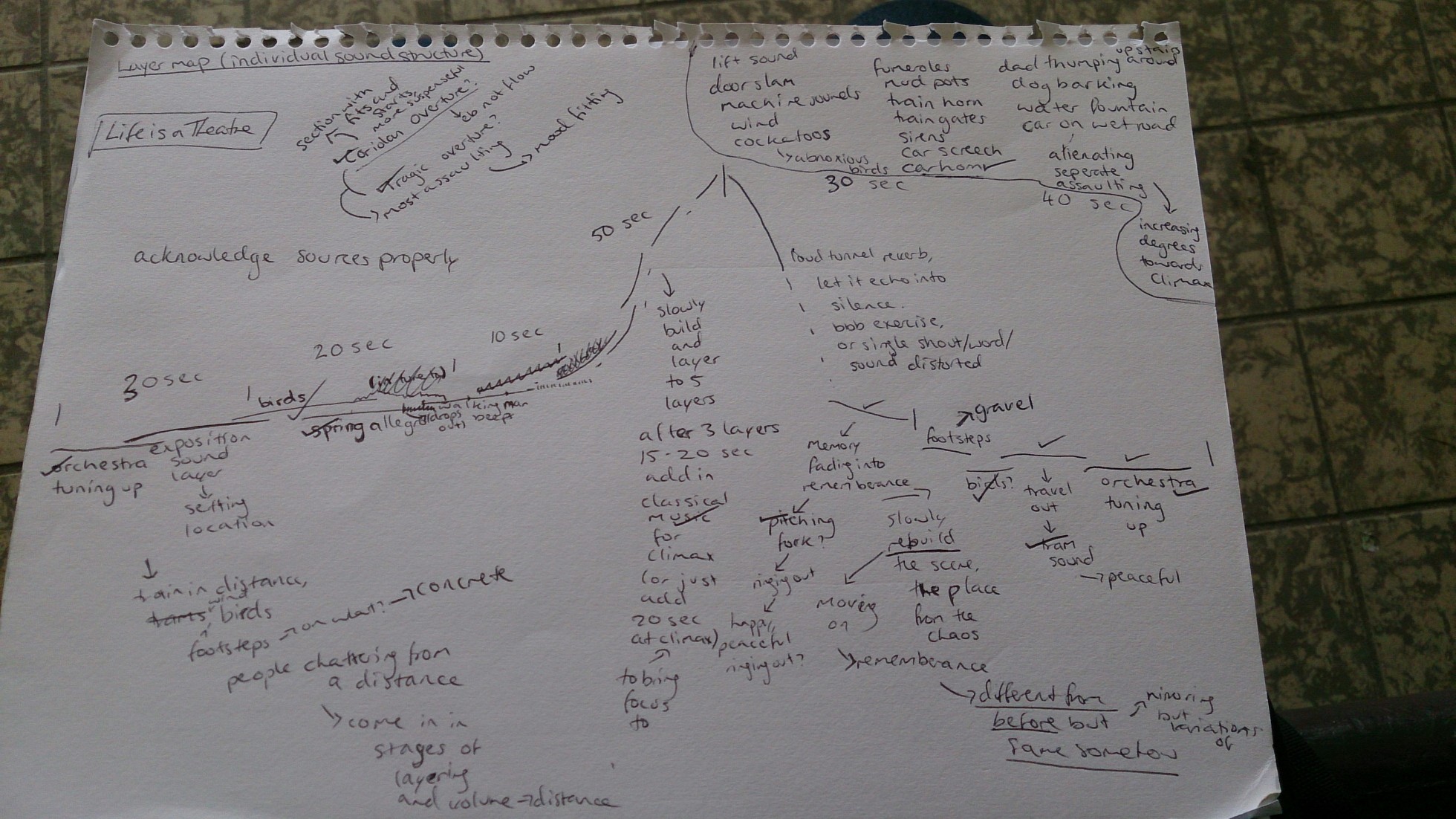
This is my second and final part of assignment three as well as my 24 hour folio; my studio based piece, for which I decided to create a short (very short) radio play, with a little help from my playwright friend, Yuki Iwama.
A short fictional radio drama about the way we each lose a piece of ourselves to the other in marriage, and how that affects the children we inevitably create.
Written and Performed by: Yuki Iwama
Direction and Sound Design by: Alaine Thompson
Featuring sound effects from the following:
. Mike Koenig, ‘Crisp Ocean Waves’, available at SoundBible.com.
. Zarabadeu, ‘Heart Beat’, available at SoundBible.com.
. Jamius, ‘SnakeAttackVerbPuls’, available at freesound.org.
. alienxxx, ‘creaking_floor_upstairs’, available at freesound.org.
(All under CC BY 3.0.)
For this piece I chose to collaborate with an emerging writer in order to produce a sound work of her piece. While this sounded like a good idea in the beginning stages of this assignment, and actually did turn out to be a really great piece that I’m really proud of, I found myself wishing I’d had more time to spend with the piece, to digest it and really get to know the ideas in depth so I could explore it more on an in depth level rather than a literal, surface level through the sound design. In hindsight I would’ve worked out the material earlier in order to produce sounds on a more emotional than literal level.
While reading through the piece and speaking to the writer about the kinds of emotions she felt and what she was trying to get across, I got the sense that the piece was a very anxious and intense piece. This anxiety layered throughout not only the writing but the pacing and rhythm of the performance, cued me to layer in a sound I found through the viewing of a recent modern play, ‘Death and the Maiden’ for which the sound design seemed to only be this hollow, echoing, white noise that came in and key harrowing and alienating points. I used this same sound to draw focus and build this feeling of anxiety and alienation inherently present throughout the piece. This sound, while being naturally discordant, also created a nice eb and flow to the piece.
This alienation was also inspired by the theatre technique known as the ‘theatre of cruelty’ which employs a heavy assault on the senses in order to alienate the audience and bring across the point the play is trying to make. I feel both the constant flow of white noise as well as the foley recorded and sourced create an uncomfortable atmosphere, really assaulting the ear drums.
Also, for the match lighting and wave foley sounds in particular, they were first used literally as a kind of atmos and then used in a more metaphorical way to create a mood out of context, as opposed to a space linked to the memory in the words. This was interesting as the same sound created an entirely new and almost haunting effect. This wasn’t really inspired by a particular radio feature, more a large combination of every radio feature we’ve listened to in class as well as the ones that I’ve listened to in my own time, as it is an effective technique to shift the mood in the piece whilst also allowing the listener to remember what exactly you are shifting from, creating a discordant and alienating break through slight variation.
I feel that both of these pieces for project three have really explored the way in which sounds have important connotative values and shape our understanding more than we realise, and while I do feel that I explored this idea well in this brief, I really want to explore it more and see how I can create a narrative in a more connotative way, leaving it up to interpretation and using cues to create a space.



